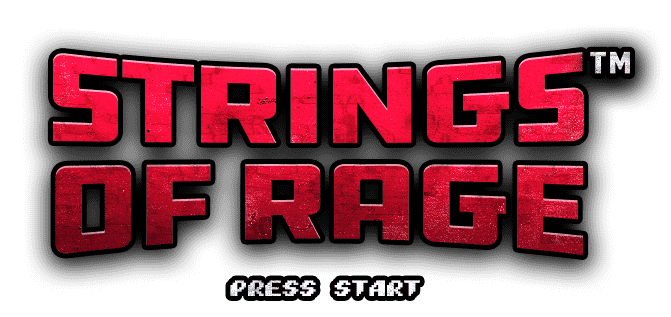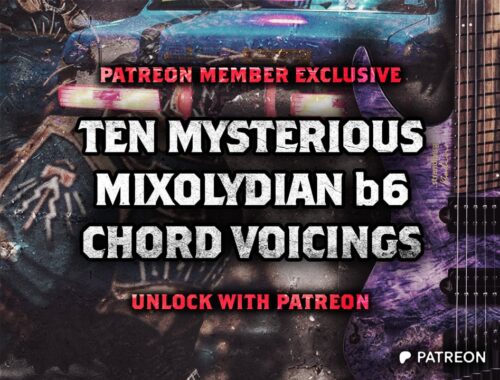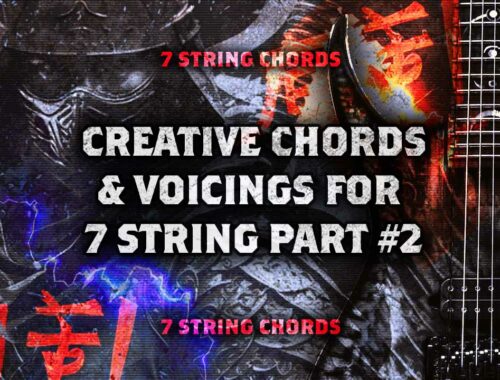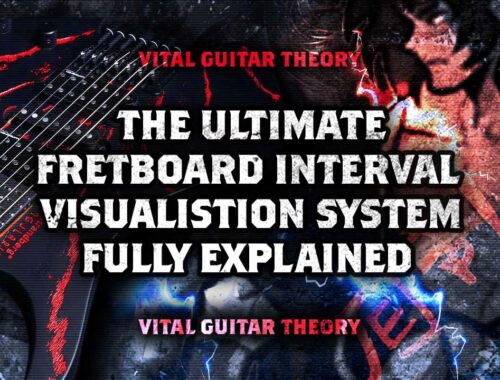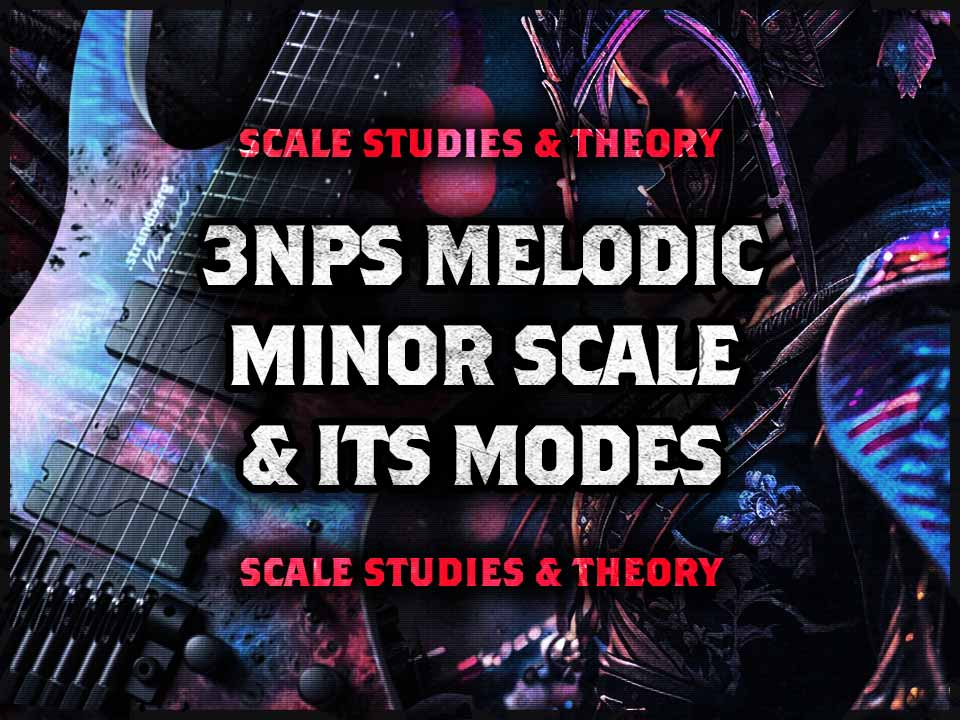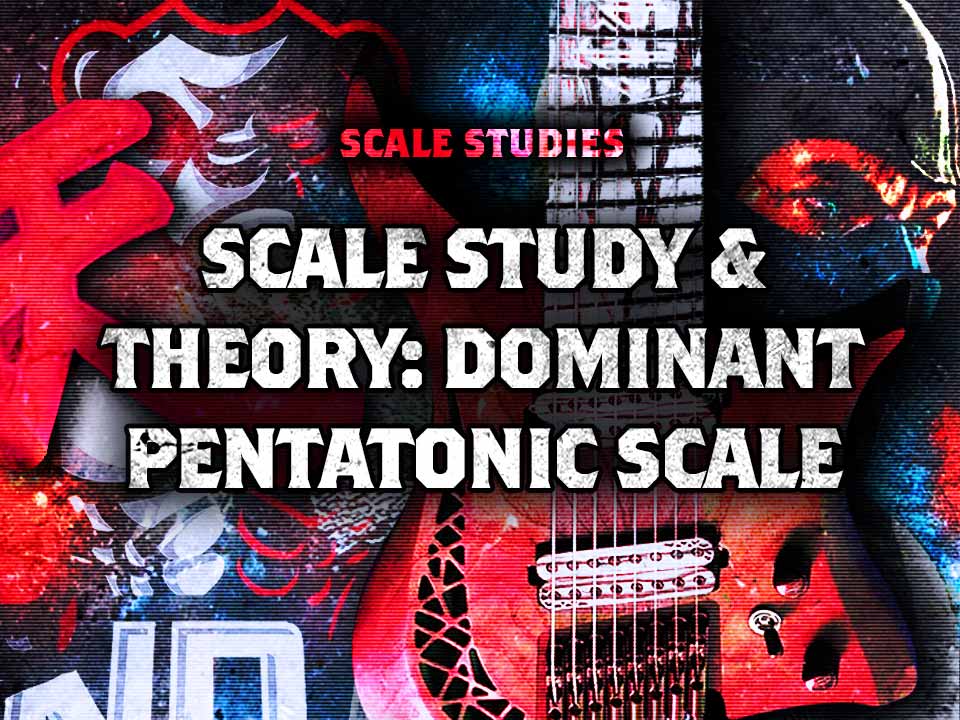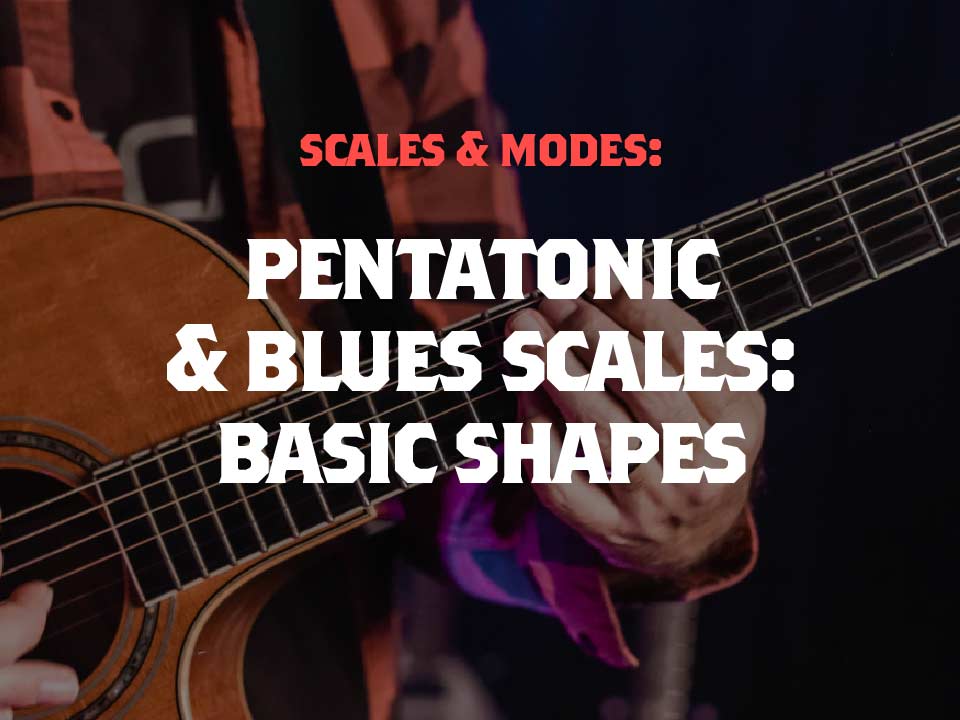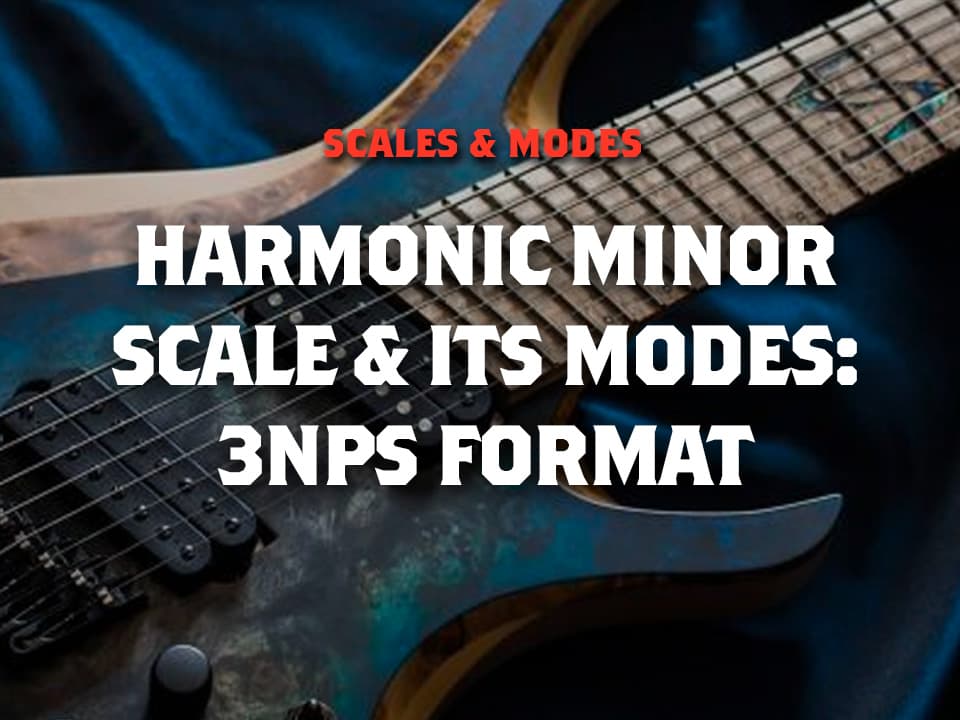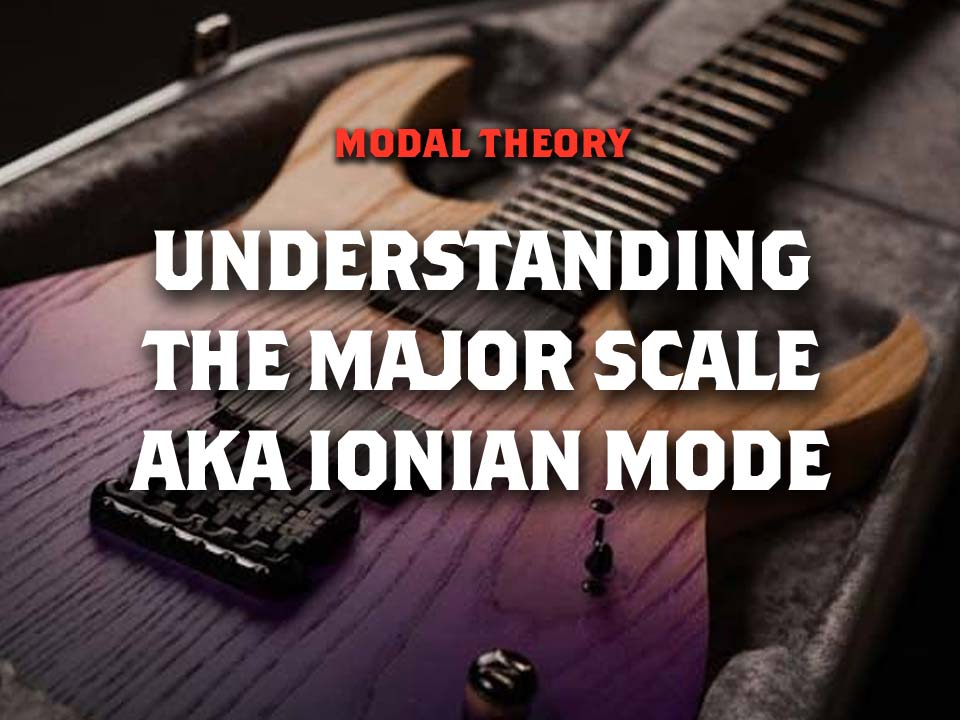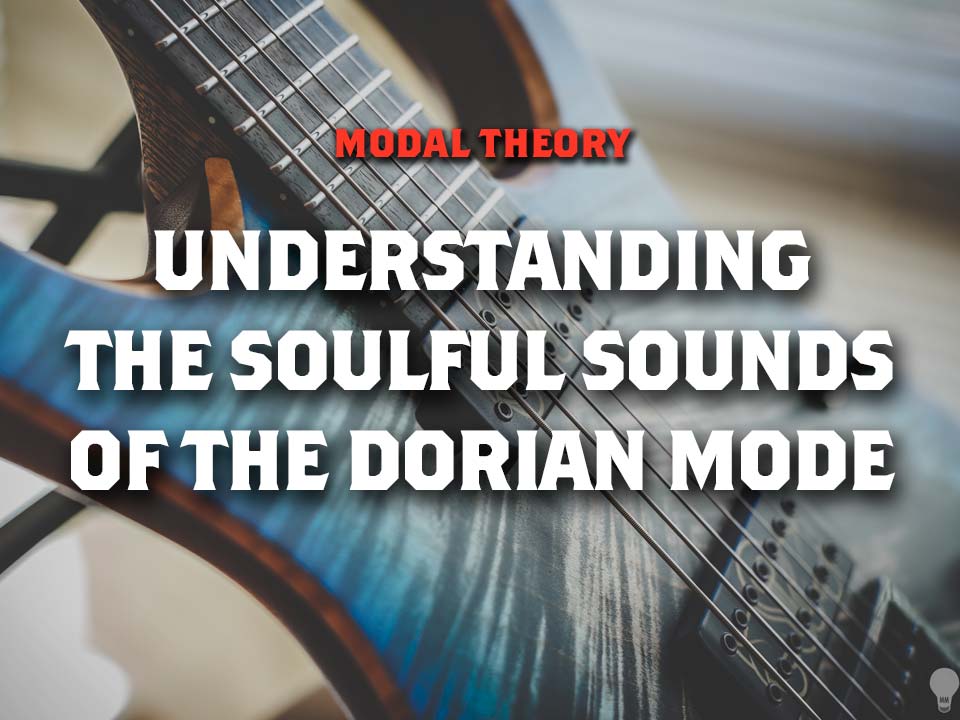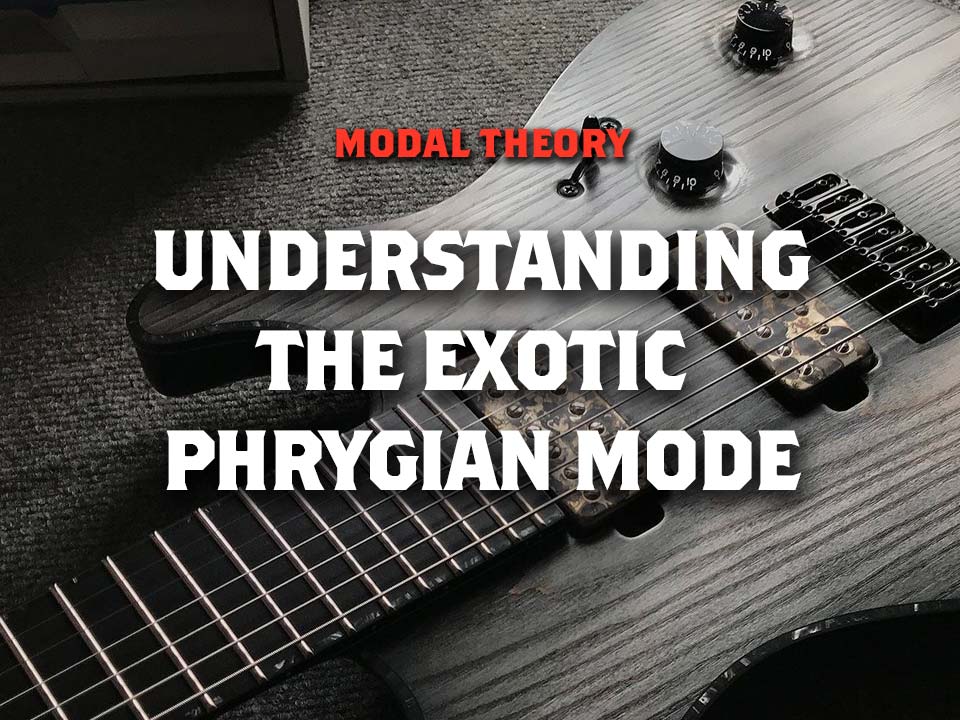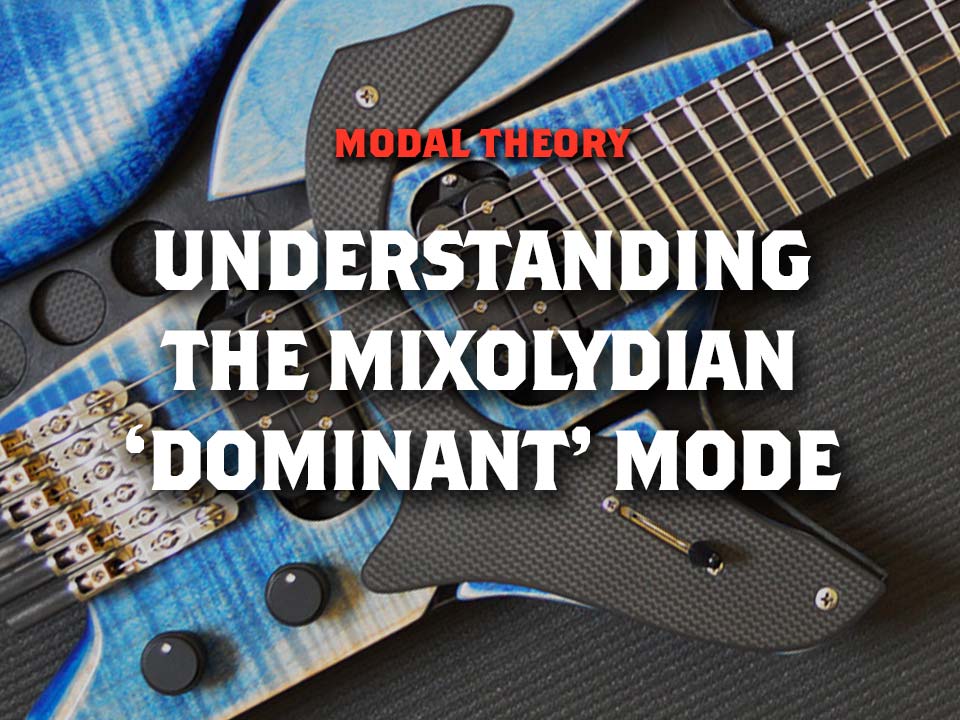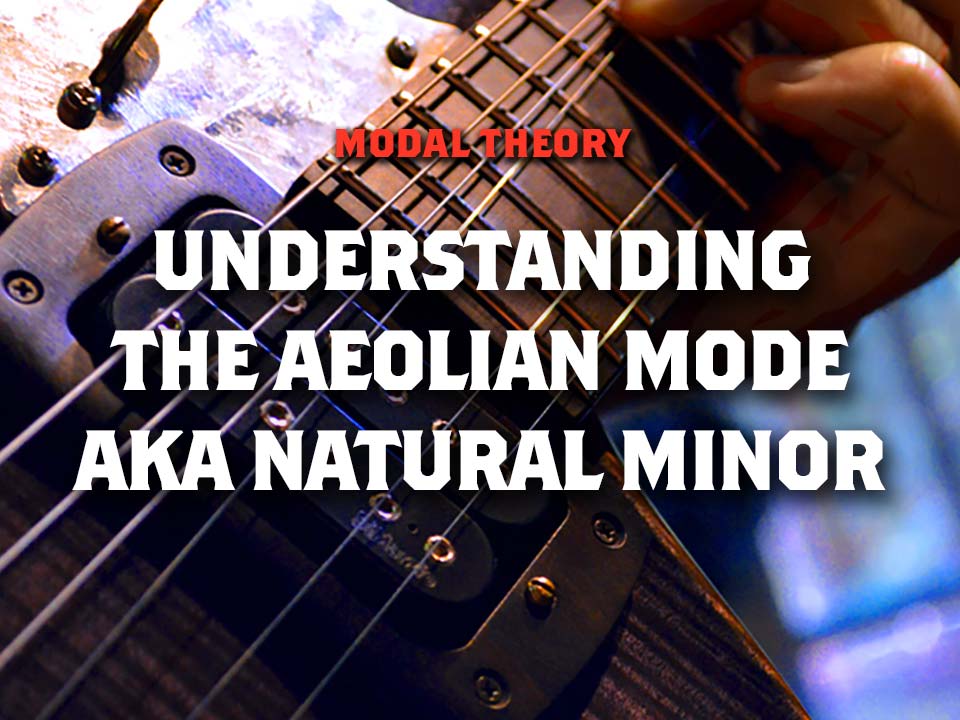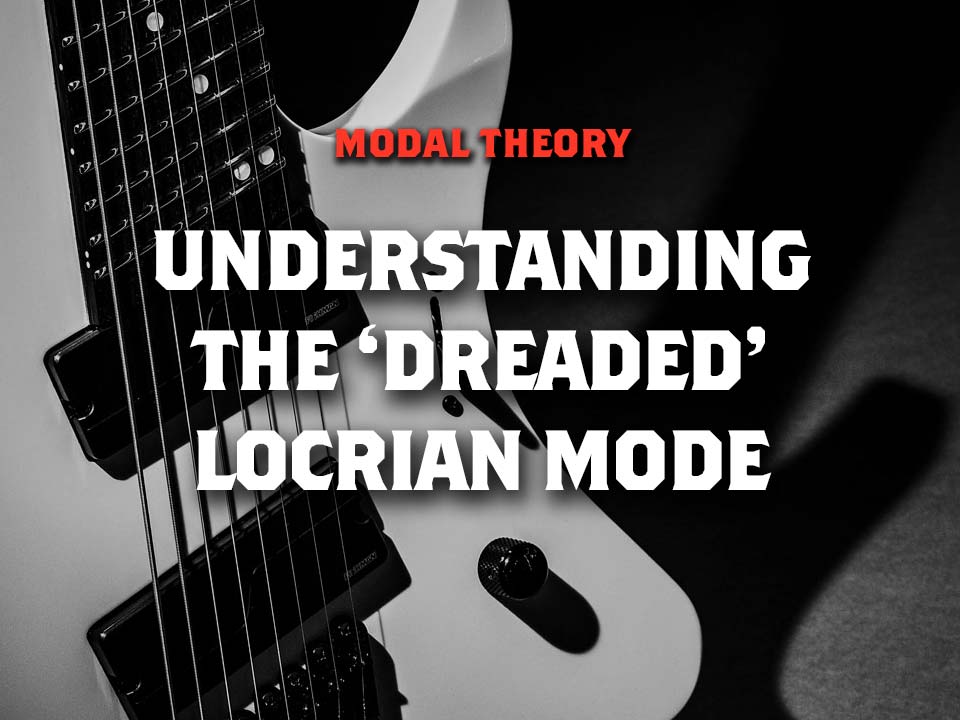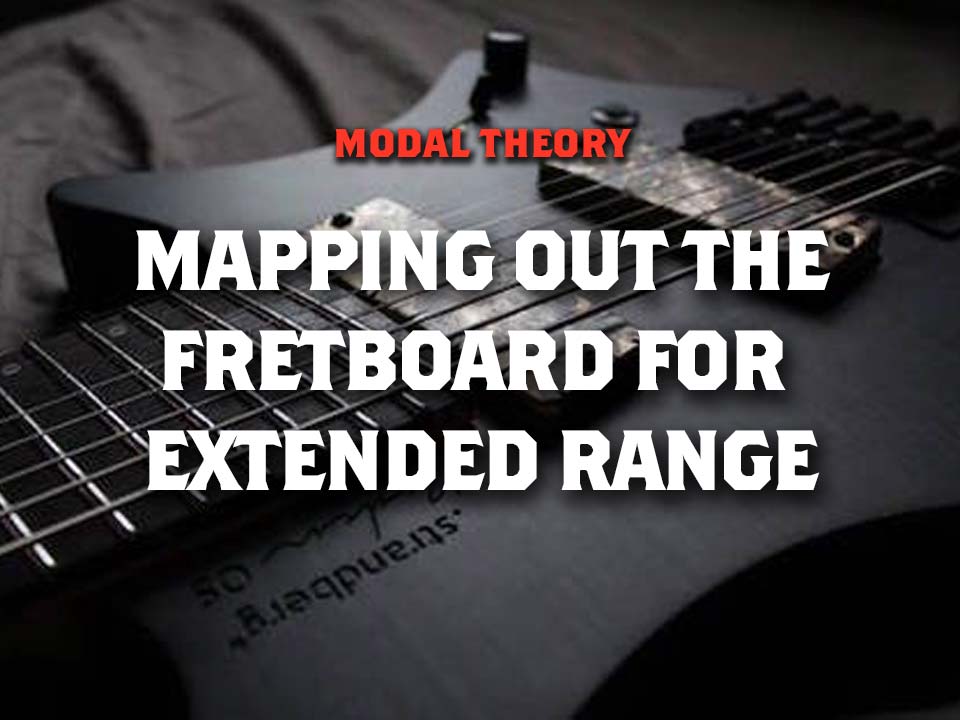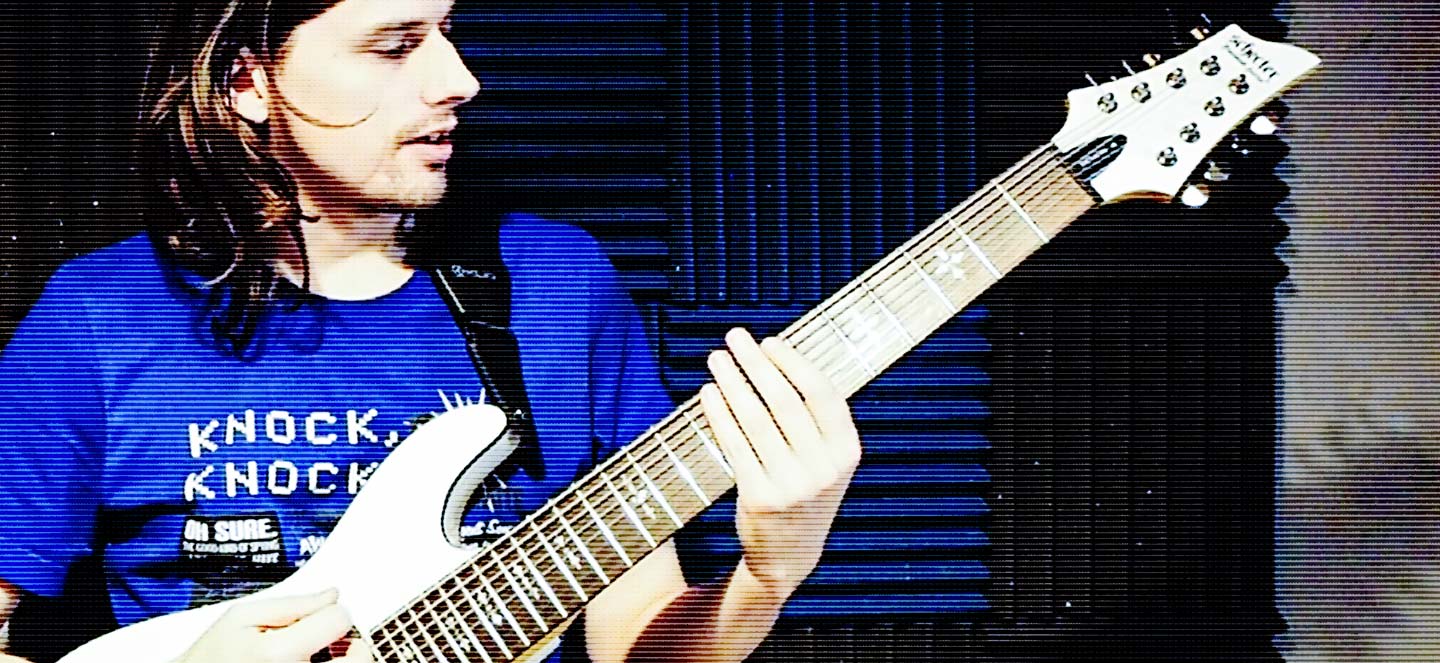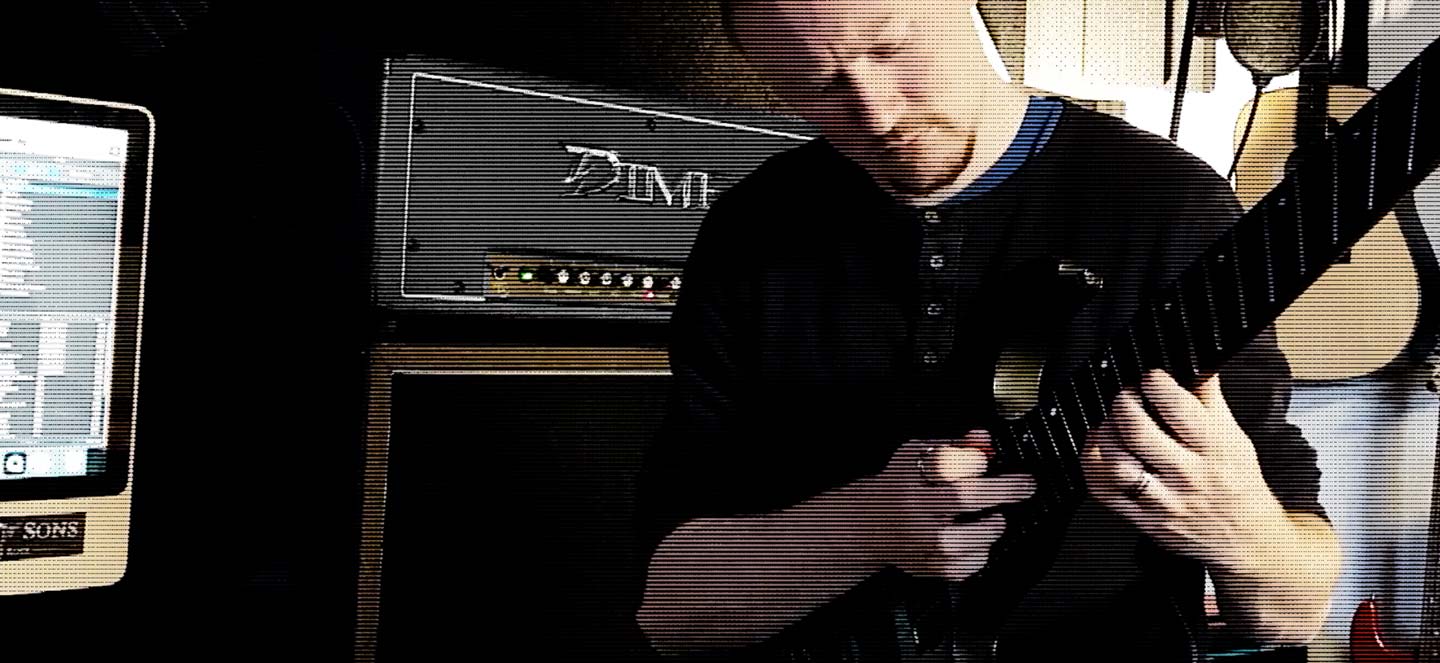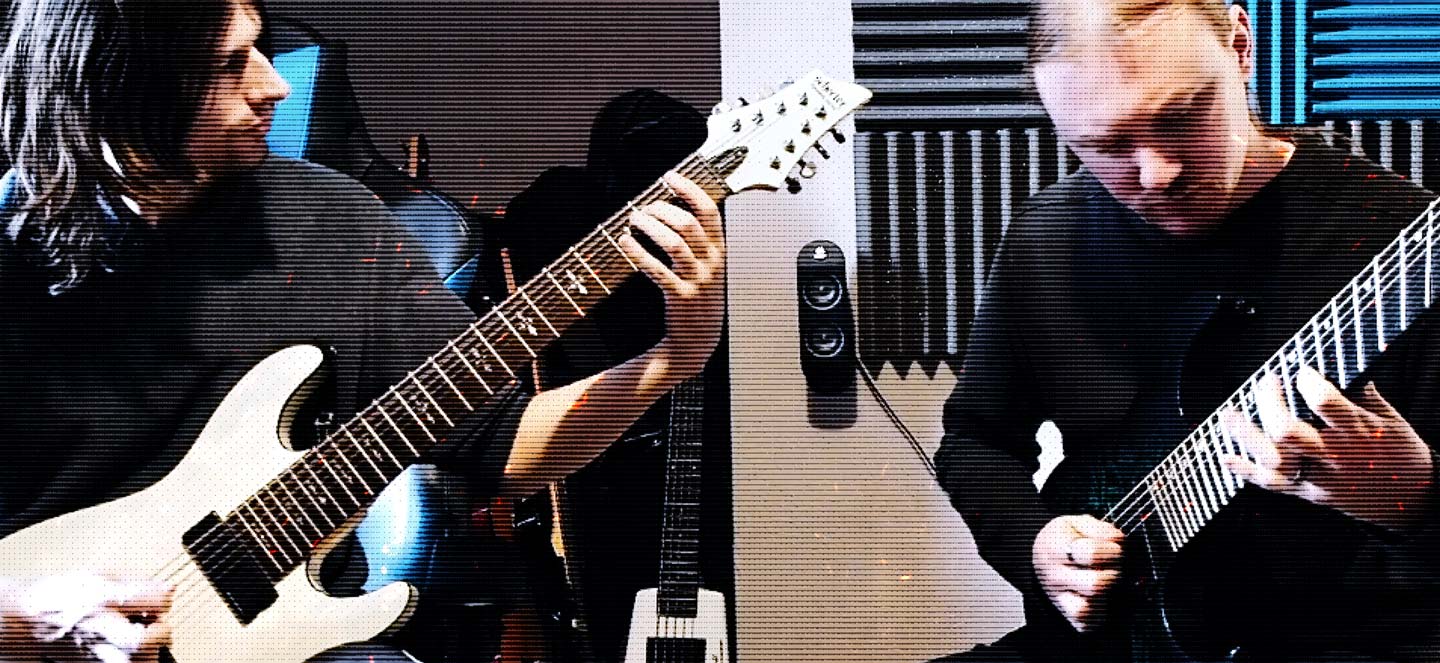The Melodic Minor Scale. Sometimes referred to as the Jazz Minor, this scale and its modes are commonly used in jazz and bebop. However with a little understanding of the construction of these modes, it can become an invaluable writing tool for rock, metal and modern prog. We’ve found The Melodic Minor Modes to be an inexhaustible source of new ideas that yields all kinds of mysterious and ‘outside’ type sounds.
In this lesson we’re going to look at the basic forms of the 3nps Melodic Minor Modes. This will give you a quick and introductory way to use and understand the sound of each mode. However we would highly encourage you to use the interval visual system to break away from box patterns entirely. This will enable you to really understand the guitar neck to play though any scale or mode all over the neck without reliance on box patterns. A deep understanding of intervals allows for ultimate mastery of the guitar. Let’s now take a look at the Melodic Minor Scale and its modes in basic 3nps format.
Continue ReadingNow the fun begins. If you have nailed down the standard major and minor pentatonic scales then these shapes will add an extra exotic flavour to your playing. The dominant pentatonic simply raises the minor third interval of the regular minor pentatonic to a major third interval to create a really exotic dominant sound.
In this lesson we’re going to look at five positions of the basic two-note-per string dominant pentatonic scales. Just like the standard pentatonic scale, there is going to be five different shapes. All of these will be built from from each note of the scale. If you’re ready to advance your pentatonics then check out this lesson.
Continue ReadingIn this lesson we’re going to look at the basic 2nps pentatonic and blues scales. There is going to be five different shapes of the pentatonic scale built from each note of the scale. However, unlike the major scale, the pentatonic scale only has 5 notes.
Penta meaning five. Each of these pentatonic and blues scales will begin from the second note of the previous scale. I’ve intentionally not given you fretboard numbers to force you to learn to connect the shapes all over the neck yourself! When you’re ready to take the next step in pentatonic playing check out this lesson! Lets go!
Continue ReadingIn this lesson we’re going to look at the basic 3nps forms of the Harmonic minor modes. We’ll aim to identify what makes these modes unique so we are able to use them in our playing.
Similar to how the modes of the major scale refer back to the major scale as a point of reference, the harmonic minor modes refer back to the major scale modes too.
Continue ReadingIn this series of lessons we will look at the modes of the Major Scale. We’ll learn how the modes relate to the major scale and look at when and how to use them.
Modes seem to be a source of confusion for a lot of people, especially the ‘self-taught’ guitarists among us. You’ll also often see modes of the major scale listed in books for reference but with little or no explanation of how to use them.
So what are the modes of the major scale?
A mode is basically the major scale, shifted along so that the ‘root’ note is different, for example in C major the second note is D. The second mode of the major scale is ‘Dorian’ so in C major we get the D Dorian mode. The notes of D Dorian are the same as C major except they run from D to C instead of C to B.
Let’s start by looking at the Major Scale itself:
Continue ReadingDorian is the second mode of the major scale so we get it by starting from the second note instead of the first. In the Key of C major the Dorian mode would be D Dorian, the notes would be D-E-F-G-A-B-C-D. The same notes as C major but starting from D instead of C.
The Dorian mode is normally used over a m7 chord, this is because the II chord in a major key is a m7. See our post on building chords from the major scale for more information. So if we have a chord progression which contains a II chord we can use the Dorian mode to solo or write a melody over it. We can also write chord progressions which resolve to Dorians I chord. For example dm7.
Phrygian is the third mode of the major scale and is considered to be a ‘minor’ scale due to the flat 3rd. the interval formula for phrygian is:
H-W-W-W-H-W-W
Since the III chord of the major scale is a m7 chord, phrygian will work well over this. For example in the key of C major the E phrygian mode would work well over Em7. To really bring out the sound of phrygian we need to make good use of the flat 2nd.
Continue ReadingLydian is the 4th mode of the major scale. In the key of C major we get F Lydian. The notes of Lydian are the same as its related major scale, however the lydian mode has an augmented 4th, also referred to as a #11.
Despite the root chord of the mode being a major 7, the lydian mode also has a tense and mysterious quality due to the #11. Since there is a whole-tone between the 3rd and 4th notes we get a semitone between the 4th and 5th.
Continue ReadingMixolydian is the 5th mode of the major scale. In C major we get G Mixolydian, the notes are: G – A – B – C – D – E – F – G. Mixolydian, like Ionian and Lydian is a major type of mode because it has a major 3rd. However it differs from Ionian and Lydian in that it has a minor 7 not a major 7.
This means that we get a Dominant chord, G7 from the mode (Rather than GMaj7), this is made up of a Root, major third, perfect fifth and a minor seventh. Despite being similar to the major scale the mixolydian mode has a lot of mileage for musical endeavours.
Continue ReadingThe sixth mode of the major scale is the Aeolian mode. This is better known as the Natural Minor Scale. In the key of C major we get the A Aeolian mode (A minor).
The A minor scale is often referred to as the ‘relative’ minor to C major. Likewise C major is the ‘relative’ major to A minor. To help understand this mode let’s look at how to write an aeolian mode chord progression.
Continue ReadingThe final mode of the major scale is the Locrian mode. Or as we here at Strings of Rage used to call it “The Dreaded Locrian Mode”.
This is because the Locrian mode tends to be quite dissonant and can be tricky to use. Some books, websites and instructional dvd’s that we’ve come across even omit Locrian entirely! Some have even mentioned it briefly and then moved on!
Continue ReadingIn this lesson we will look at the repeating pattern of the 3nps modes for extended range guitar. This will help you to learn all the modes more easily. We’ll start by using the Mixolydian mode again.
In this lesson on the modes for extended range guitar we’ll look at 7 string guitar (Tuned: B-E-A-D-G-B-E) and two different tunings for 8 string guitar.
Continue ReadingTake your scale knowledge to the next level. Major Scale, Harmonic Minor, Melodic Minor, Exotic Modes
